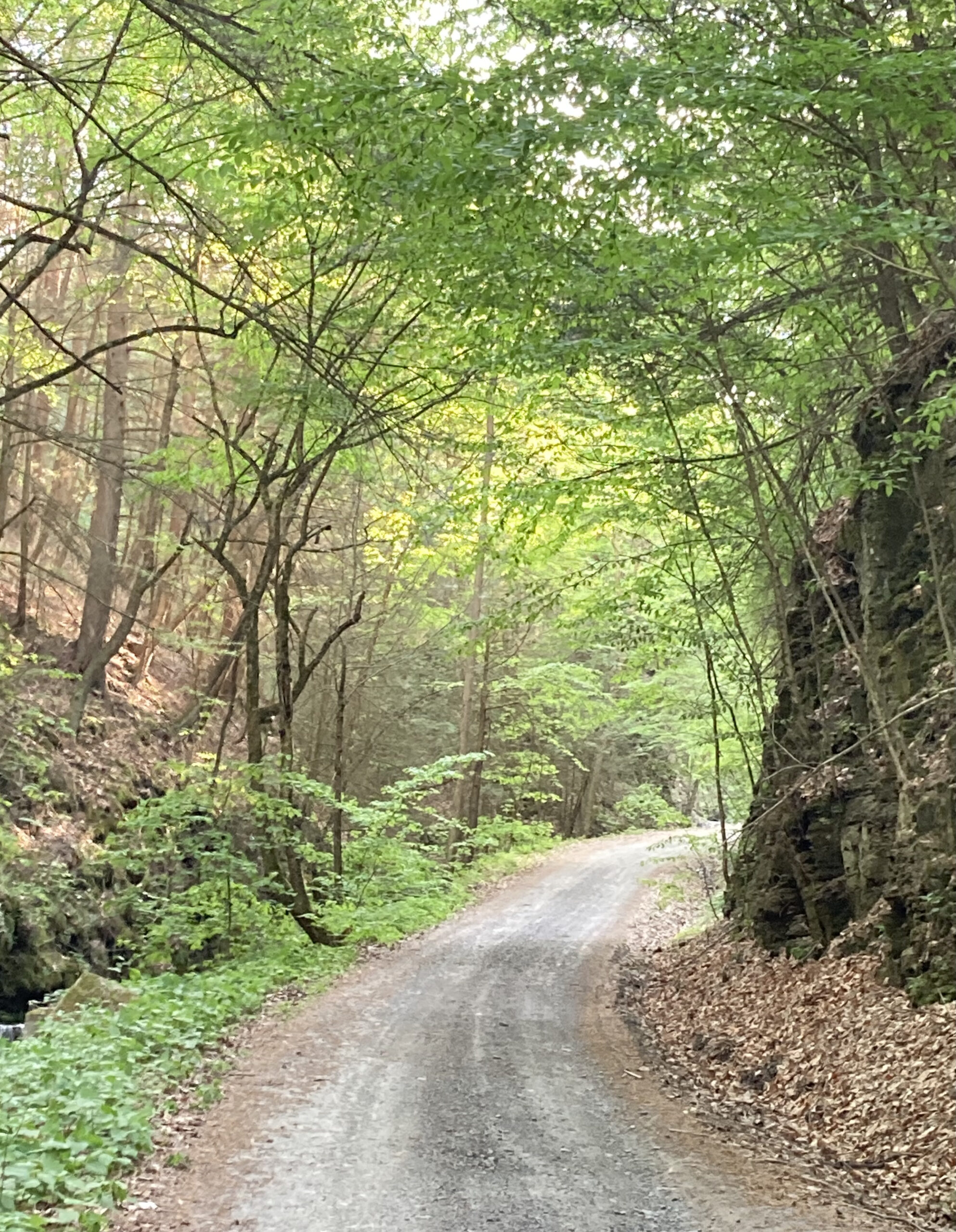I was walking up this long rural road, a road I walk or drive on almost daily. And as I looked to the distance ahead, let my mind rest mindfully in the view, I suddenly felt there were layers in this road or under it. Old roads. Unknowns. The road has two lanes now. Was it once only one lane? A path traveled by native Americans? A deer path?
What was this hill like in the past before this road was built? What is hidden? I stopped and stared into the distance, imagining what the road might cover. These trees on the side. They are now maybe forty feet high. In many places there is just one lone tree fronting a home. Were the trees that bordered this road once part of a vast forest of interconnected trees, huge monsters reaching up to the sky?
We think of our road, village, town, or city as being just this, just the way it is now. The same old thing. But we know this isn’t the only way to see it. Not the only way it has been seen, even by me. This road, for example, was recently repaved and widened. The relationship of me standing here, the car speeding too fast by me, that crow calling, the spongy moth floating down its line never existed before.
What does it mean to me, now, that just 39 years ago, the lines of cables lining the road for the internet weren’t here? There was no Facebook, TikTok, texting.
What does it mean that 77 years ago World War II ended? A hundred years ago was the roaring 20’s. About four hundred years ago, the first Europeans came to this area, which had been populated up to then by the Cayuga tribe of Native Americans. Before the Cayugas, there were more bears than people. Today, we’re shocked, but maybe secretly filled with joy, when a bear walks down our street or visits the food market. Back then, the bears were shocked to see one of us in the forest. So much change.
How is this past alive in this present? What does it mean that our lives can change so much and so continuously? So much pain. So much gain and loss.
History is the story of change. Dr. Theodore Christou said history is rooted in storytelling. The Greek root of ‘history’ is historia, which means inquiry, seeking knowledge. And ‘story’, histoire in French, is history without the ‘hi’. Both words refer to an account of events.
We use stories to organize and shape the moments and events of our lives into memories. How we shape those stories is how we shape ourselves, create an identity or personal history. And we then know ourselves through these stories. Likewise, a culture knows itself through its stories. This history is a collective memory. It shapes how we relate with others and shows us who we are….
**To read the whole post, please go to The Good Men Project.


